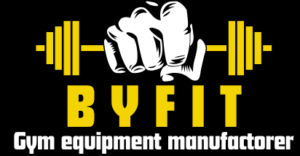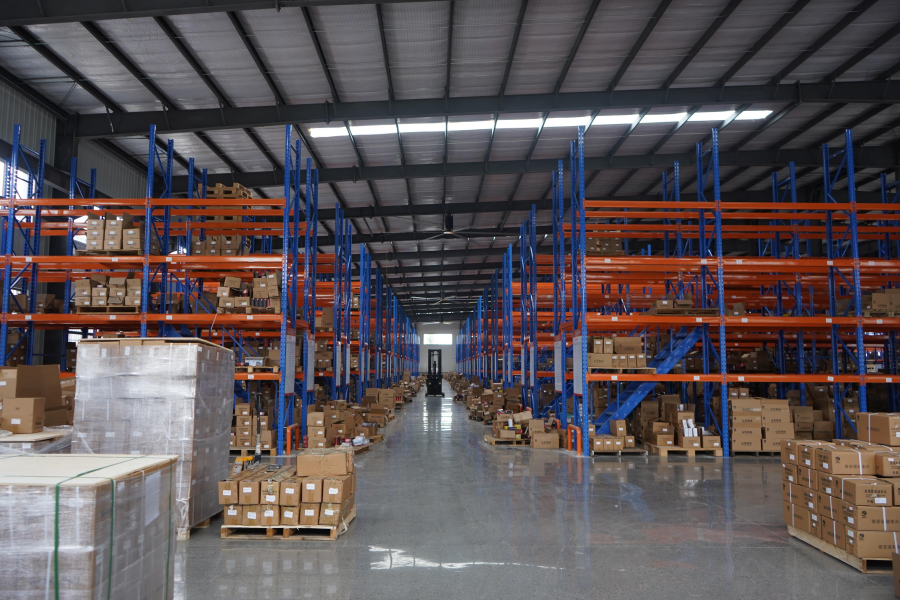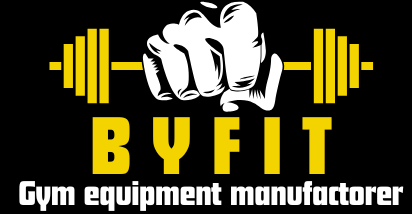How to Stay Competitive as a Fitness Equipment Distributor?
In the rapidly evolving fitness industry, staying competitive as a fitness equipment distributor requires a strategic approach that encompasses market trends, customer needs, and operational efficiency. This article explores key strategies to help distributors navigate the challenges and opportunities in the global fitness equipment market.
As I begin to unpack this challenge, I find myself drawn to multiple layers of consideration. Initially, the surface-level approach seems straightforward, but deeper reflection reveals a web of interconnected variables that demand a more nuanced examination.
My thought process begins with mapping out the fundamental components, then systematically exploring their relationships. Each insight generates new questions, creating a dynamic intellectual landscape where understanding emerges not as a continuously evolving journey.
Key Takeaways for Fitness Equipment Distributors
To remain competitive, fitness equipment distributors must:
- Stay informed about market trends and consumer preferences
- Build strong relationships with reliable manufacturers and suppliers
- Offer high-quality, certified equipment that meets customer expectations
- Provide customization options to cater to diverse client needs
- Optimize supply chain and logistics for efficient operations
Key observations emerge through this process:
- Initial assumptions often reveal their limitations upon careful scrutiny
- Complex systems require holistic, multi-perspective analysis
- True understanding comes from embracing uncertainty and intellectual humility

Staying informed about market trends is crucial for fitness equipment distributors.
The Evolving Landscape of the Fitness Equipment Market
Global Market Trends and Projections
The global fitness equipment market is expected to reach USD 17.92 billion by 2024, with a projected growth to USD 30.61 billion by 2034 at a CAGR of 5.5%. This growth is driven by factors such as increasing health awareness, the proliferation of fitness centers, and the adoption of home fitness solutions. Distributors must stay attuned to these trends to identify opportunities and adapt their strategies accordingly.
Considering this market landscape, I find myself tracing multiple potential pathways for distributors. Each potential strategy is not just an endpoint, but a hypothesis to be tested, challenged, and refined. The process itself becomes as valuable as the eventual resolution.
Regional Variations and Opportunities
While the fitness equipment market is global, regional variations exist in terms of consumer preferences, regulatory requirements, and economic conditions. For example, the U.S. fitness equipment market, valued at USD 4.14 billion in 2024, is expected to grow to USD 7.23 billion by 2034 at a CAGR of 5.73%. Distributors should assess regional market dynamics to identify growth potential and tailor their offerings to specific market needs.
My approach to navigating regional variations involves:
- Deconstructing the market into its fundamental components
- Exploring potential interconnections and systemic implications
- Developing adaptive strategies that remain flexible to emerging insights
- Maintaining a stance of curious skepticism
Shifts in Consumer Preferences and Demand
Consumer preferences in the fitness equipment market are evolving, with a growing emphasis on technology integration, connected fitness experiences, and versatile equipment that caters to diverse workout styles. Distributors must stay informed about these shifts and work with manufacturers who can provide innovative solutions that align with changing consumer expectations.
As I delve into the shifts in consumer preferences, I recognize the importance of embracing a holistic perspective. Each trend represents not just an isolated change, but a ripple effect that influences the entire market ecosystem. Distributors who can anticipate and adapt to these interconnected dynamics will be better positioned to meet evolving customer needs.

Navigating the fitness equipment supply chain is essential for distributors.
Identifying Reputable Manufacturers and Suppliers
Partnering with reputable fitness equipment manufacturers and suppliers is critical for distributors to ensure product quality, reliability, and timely delivery. Distributors should conduct thorough due diligence, assessing manufacturers’ track records, production capabilities, and commitment to customer satisfaction. Building long-term relationships with trusted partners can provide a competitive edge in terms of product access, pricing, and support.
The process of identifying reputable manufacturers and suppliers requires a systematic yet flexible approach. It involves:
- Researching industry reputation and customer feedback
- Assessing production capacity and quality control measures
- Evaluating alignment with distributor values and goals
- Conducting on-site visits and product testing
- Establishing clear communication channels and performance metrics
Quality Assurance and Certification Standards
Ensuring the quality and safety of fitness equipment is paramount for distributors. Partnering with manufacturers who adhere to stringent quality control processes and international certification standards, such as ISO and CE, can help mitigate risks and build customer trust. Distributors should prioritize equipment that meets these standards to differentiate themselves in the market and attract discerning buyers.
Quality assurance and certification standards serve as critical guardrails in the fitness equipment industry. They provide a framework for assessing product reliability, safety, and performance. However, it’s important to recognize that these standards are not static entities. They evolve in response to technological advancements, regulatory changes, and emerging best practices.
As I consider the role of quality assurance and certification in the distributor’s journey, I’m reminded of the importance of continuous learning and adaptation. Staying informed about the latest standards, participating in industry forums, and collaborating with experts can help distributors navigate this complex landscape with confidence.
Customization Options for Brand Differentiation
Offering customization options can help distributors differentiate their offerings and cater to the unique needs of their clients. This can include custom branding, color schemes, or equipment modifications to suit specific fitness center aesthetics or training requirements. Collaborating with manufacturers who offer flexible customization options can help distributors create a competitive advantage and build stronger customer relationships.
Customization is not just about meeting specific client requests; it’s about understanding the deeper aspirations and values that drive those requests. By engaging in meaningful dialogues with clients, distributors can uncover insights that go beyond surface-level customization.
This process of co-creation requires a delicate balance of active listening, creative problem-solving, and technical expertise. It demands a willingness to challenge assumptions, explore unconventional ideas, and iterate based on feedback. When executed effectively, customization becomes a powerful tool for building trust, loyalty, and long-term partnerships.
Optimizing Logistics and Delivery Processes
Efficient logistics and timely delivery are critical success factors for fitness equipment distributors. Streamlining supply chain processes, utilizing technology for inventory management, and partnering with reliable shipping providers can help ensure smooth operations and customer satisfaction. Distributors should also consider offering installation and maintenance services to provide a comprehensive solution for their clients.
Optimizing logistics and delivery processes is an ongoing journey that requires continuous improvement and adaptation. It involves:
- Mapping out the end-to-end supply chain to identify bottlenecks and inefficiencies
- Investing in technology solutions for real-time visibility and data-driven decision-making
- Cultivating relationships with reliable logistics partners who understand the unique requirements of the fitness equipment industry
- Implementing robust quality control measures at each stage of the delivery process
- Continuously gathering feedback from customers and stakeholders to identify areas for improvement
As I reflect on the importance of logistics optimization, I’m reminded of the ripple effects it can have on the entire customer experience. Seamless delivery and installation not only meet immediate client expectations but also set the stage for long-term satisfaction and loyalty.

Successful fitness equipment wholesale requires strategic partnerships and customer-centric approaches.
Strategies for Successful Bulk Fitness Equipment Purchases
Defining Your Product Requirements and Specifications
To make successful bulk fitness equipment purchases, distributors must have a clear understanding of their product requirements and specifications. This involves assessing customer needs, market trends, and regulatory standards to develop a targeted product portfolio. Distributors should work closely with their clients to gather insights and tailor their offerings accordingly.
Defining product requirements and specifications is not a one-time event but an iterative process. It requires ongoing dialogue with clients, market research, and collaboration with manufacturers. By staying attuned to evolving needs and trends, distributors can continually refine their product offerings and stay ahead of the competition.
Evaluating Supplier Capabilities and Track Records
When sourcing fitness equipment in bulk, distributors must carefully evaluate supplier capabilities and track records. This includes assessing production capacity, quality control measures, certifications, and customer feedback. Conducting factory audits and requesting product samples can help distributors make informed decisions and mitigate potential risks.
Evaluating supplier capabilities and track records is a multifaceted process that requires a blend of quantitative and qualitative analysis. It involves:
- Reviewing financial stability and business continuity plans
- Assessing technical expertise and innovation potential
- Evaluating responsiveness and communication effectiveness
- Conducting reference checks and gathering industry feedback
- Analyzing performance metrics and delivery track records
As I consider the importance of supplier evaluation, I recognize that it’s not just about minimizing risks but also about maximizing opportunities. By partnering with capable, reliable suppliers, distributors can access new markets, expand their product offerings, and deliver greater value to their customers.
Negotiating Pricing, Payment Terms, and Contracts
Effective negotiation skills are essential for distributors to secure favorable pricing, payment terms, and contracts when purchasing fitness equipment in bulk. Distributors should leverage their purchasing power, market knowledge, and relationships to negotiate competitive deals. Establishing clear communication channels and building trust with suppliers can facilitate smooth negotiations and long-term partnerships.
Negotiation is not just a transactional process; it’s an opportunity to build mutually beneficial relationships. It requires a delicate balance of assertiveness and empathy, of strategic thinking and creative problem-solving. Effective negotiators understand the importance of finding win-win solutions that align the interests of all parties involved.
As I reflect on the art of negotiation, I’m reminded of the importance of preparation, flexibility, and active listening. By thoroughly understanding market dynamics, supplier constraints, and customer needs, distributors can enter negotiations with confidence and clarity. By remaining open to alternative solutions and actively seeking to understand supplier perspectives, distributors can foster a collaborative environment that leads to long-term success.
Managing Quality Control and Inspection Processes
Implementing robust quality control and inspection processes is crucial to ensure the consistency and reliability of fitness equipment purchased in bulk. Distributors should establish clear quality standards, conduct regular inspections, and work with suppliers who have stringent quality control measures in place. Addressing any quality issues promptly and collaboratively with suppliers can help maintain customer satisfaction and protect the distributor’s reputation.
Managing quality control and inspection processes requires a systematic approach that encompasses:
- Defining clear quality standards and acceptance criteria
- Implementing rigorous testing and inspection protocols
- Utilizing technology solutions for real-time quality monitoring and data analysis
- Establishing effective communication channels with suppliers for issue resolution
- Continuously improving processes based on feedback and lessons learned
As I consider the importance of quality management, I recognize that it’s not just about catching defects but also about preventing them from occurring in the first place. By fostering a culture of quality and collaboration throughout the supply chain, distributors can proactively address potential issues and deliver consistently high-quality products to their customers.

Overcoming challenges in fitness equipment wholesale requires adaptability and strategic problem-solving.
Expert Insights: Overcoming Common Challenges in Fitness Equipment Wholesale
Mitigating Supply Chain Risks and Disruptions
Fitness equipment distributors often face supply chain risks and disruptions, such as production delays, shipping issues, or unexpected events like the COVID-19 pandemic. To mitigate these risks, distributors should diversify their supplier base, maintain adequate inventory levels, and develop contingency plans. Regularly monitoring supply chain performance and staying proactive in communication with suppliers can help minimize the impact of disruptions.
Mitigating supply chain risks and disruptions requires a proactive and adaptive approach. It involves:
- Conducting regular risk assessments and scenario planning
- Building resilience through supplier diversification and multi-sourcing strategies
- Investing in technology solutions for real-time supply chain visibility and analytics
- Establishing clear communication protocols and escalation paths
- Continuously refining contingency plans based on emerging risks and lessons learned
As I reflect on the challenges of supply chain risk management, I’m reminded of the importance of embracing uncertainty and building adaptability. In an increasingly interconnected and volatile global marketplace, distributors who can anticipate, respond to, and learn from disruptions will be better positioned for long-term success.
Adapting to Evolving Regulatory Landscapes
The regulatory landscape for fitness equipment can vary across regions and is subject to change. Distributors must stay informed about relevant regulations, such as safety standards, import/export requirements, and labeling guidelines. Partnering with suppliers who are knowledgeable about regulatory compliance and actively monitoring regulatory changes can help distributors navigate complex legal environments and avoid potential pitfalls.
Adapting to evolving regulatory landscapes requires a proactive and collaborative approach. It involves:
- Staying informed about regulatory updates and industry best practices
- Collaborating with legal experts and industry associations to interpret and apply regulations
- Investing in compliance training and resources for employees and partners
- Establishing clear communication channels with suppliers and customers to ensure regulatory alignment
- Continuously assessing and improving compliance processes based on feedback and lessons learned
As I consider the importance of regulatory adaptation, I recognize that it’s not just about avoiding penalties but also about building trust and credibility with customers and stakeholders. By demonstrating a commitment to compliance and transparency, distributors can differentiate themselves in the market and establish a reputation for integrity and reliability.
Balancing Cost, Quality, and Sustainability Considerations
Distributors often face the challenge of balancing cost, quality, and sustainability considerations when sourcing fitness equipment. While competitive pricing is important, compromising on quality or sustainability can have long-term negative consequences. Distributors should seek suppliers who offer a balance of affordability, durability, and eco-friendly practices. Conducting cost-benefit analyses and considering the total cost of ownership can help distributors make informed decisions that align with their values and customer expectations.
<pp>Balancing cost, quality, and sustainability considerations is a complex and multifaceted challenge that requires a holistic and adaptive approach. It involves:
- Conducting comprehensive cost-benefit analyses that consider both short-term and long-term impacts
- Collaborating with suppliers to identify opportunities for cost optimization without compromising quality or sustainability
- Investing in technology solutions that enable data-driven decision-making and performance monitoring
- Engaging customers and stakeholders to understand their evolving expectations and priorities
- Continuously assessing and refining sourcing strategies based on market dynamics and emerging best practices
As I reflect on the importance of balancing cost, quality, and sustainability, I’m reminded of the interconnectedness of these factors. Each decision has ripple effects that extend beyond the immediate transaction. By adopting a systems thinking approach and considering the long-term implications of sourcing decisions, distributors can create value for their customers, their partners, and the wider community.

Taking actionable steps is key to staying competitive as a fitness equipment distributor.
Actionable Next Steps for Fitness Equipment Distributors
Conduct Thorough Market Research and Due Diligence
To stay competitive, fitness equipment distributors must continuously conduct market research and due diligence. This involves analyzing market trends, monitoring competitor activities, and gathering customer insights. Distributors should also thoroughly vet potential suppliers, assessing their capabilities, reputation, and alignment with their business goals. Regularly updating market knowledge and adapting strategies based on research findings can help distributors stay ahead of the curve.
Conducting thorough market research and due diligence is an ongoing process that requires a systematic and curious approach. It involves:
- Defining clear research objectives and key performance indicators
- Utilizing a mix of primary and secondary research methods to gather comprehensive insights
- Collaborating with industry experts and thought leaders to validate findings and explore new perspectives
- Analyzing data using both quantitative and qualitative techniques to uncover meaningful patterns and trends
- Continuously refining research strategies based on feedback and lessons learned
As I consider the importance of market research and due diligence, I recognize that it’s not just about gathering information but also about transforming that information into actionable intelligence. By staying attuned to market dynamics and customer needs, distributors can make informed decisions that drive innovation, differentiation, and growth.
Develop a Clear Procurement Strategy and Criteria
Developing a clear procurement strategy and criteria is essential for fitness equipment distributors to make informed purchasing decisions. This involves defining product requirements, quality standards, and budget parameters. Distributors should also establish a structured process for evaluating and selecting suppliers, considering factors such as pricing, lead times, and after-sales support. Having a well-defined procurement strategy can help distributors optimize their sourcing efforts and ensure consistency in their offerings.
Developing a clear procurement strategy and criteria requires a holistic and adaptive approach. It involves:
- Aligning procurement objectives with overall business goals and customer needs
- Defining clear and measurable criteria for supplier evaluation and selection
- Collaborating with cross-functional teams to ensure alignment and buy-in
- Leveraging technology solutions to streamline procurement processes and enable data-driven decision-making
- Continuously refining procurement strategies based on performance metrics and market feedback
As I reflect on the importance of procurement strategy development, I’m reminded of the role it plays in shaping the distributor’s competitive advantage. By aligning sourcing decisions with customer needs and business objectives, distributors can deliver greater value, build stronger relationships, and drive long-term success.
Engage with Multiple Potential Suppliers and Partners
Engaging with multiple potential suppliers and partners can provide fitness equipment distributors with a broader range of options and opportunities. Distributors should actively seek out and establish relationships with various manufacturers, attending trade shows, and exploring online platforms to identify potential collaborations. Building a diverse network of suppliers can help distributors mitigate risks, access innovative products, and negotiate better terms.
Engaging with multiple potential suppliers and partners requires a proactive and open-minded approach. It involves:
- Identifying and prioritizing potential partners based on strategic fit and complementary capabilities
- Establishing clear communication channels and engagement protocols to facilitate effective collaboration
- Conducting thorough evaluations and due diligence to assess partner viability and alignment
- Developing mutually beneficial partnership agreements that define roles, responsibilities, and performance expectations
- Continuously nurturing and expanding partner relationships through regular communication, joint initiatives, and performance reviews
As I consider the importance of engaging with multiple suppliers and partners, I recognize that it’s not just about diversifying risk but also about fostering innovation and growth. By leveraging the collective strengths and expertise of a diverse partner ecosystem, distributors can access new markets, technologies, and business models that drive competitive advantage.
Invest in Relationship Building and Long-term Collaboration
Investing in relationship building and long-term collaboration is crucial for fitness equipment distributors to establish strong partnerships with suppliers and customers. Distributors should prioritize open communication, transparency, and mutual trust in their interactions. Regularly engaging with suppliers to discuss market trends, product development, and continuous improvement opportunities can foster a collaborative environment. Similarly, maintaining close relationships with customers through personalized support, training, and after-sales services can enhance customer loyalty and drive repeat business.
Investing in relationship building and long-term collaboration requires a strategic and empathetic approach. It involves:
- Establishing clear expectations and shared goals with partners and customers
- Fostering open and transparent communication to build trust and alignment
- Investing in joint planning, problem-solving, and continuous improvement initiatives
- Demonstrating a genuine commitment to partner and customer success through proactive support and value creation
- Continuously assessing and strengthening relationships based on feedback, performance, and evolving needs
As I reflect on the importance of relationship building and long-term collaboration, I’m reminded of the transformative power of strategic partnerships. By aligning interests, leveraging complementary strengths, and fostering a culture of trust and innovation, distributors can create shared value that goes beyond transactional exchanges. Long-term collaborations become a source of competitive advantage, enabling distributors to navigate challenges, seize opportunities, and drive sustainable growth in an ever-changing market landscape.
Conclusion: Embracing Adaptability and Innovation
Staying competitive as a fitness equipment distributor in today’s dynamic market requires a proactive and adaptable approach. By staying informed about market trends, building strong relationships with reliable suppliers, and offering high-quality, customizable solutions, distributors can differentiate themselves and meet evolving customer needs.
To thrive in this competitive landscape, distributors must embrace innovation and continuously seek ways to improve their operations and offerings. This may involve investing in digital technologies, exploring new product categories, or expanding into emerging markets. By staying agile and responsive to change, distributors can seize opportunities and overcome challenges in the ever-evolving fitness equipment industry.
As I reflect on the journey of staying competitive, I’m reminded of the importance of embracing a growth mindset and a culture of continuous learning. Success in the fitness equipment distribution industry is not a destination but an ongoing process of adaptation, experimentation, and improvement. By fostering a spirit of curiosity, collaboration, and customer-centricity, distributors can navigate the complexities of the market and emerge as leaders in their field.
Take action now to elevate your fitness equipment distribution business. Conduct thorough market research, develop a clear procurement strategy, engage with multiple suppliers, and invest in long-term relationships. By taking these steps, you can position your business for success and stay ahead of the competition.
For more insights and resources on fitness equipment wholesale, visit our blog and explore our range of high-quality fitness equipment. Contact us today to discuss how we can support your growth as a distributor in the thriving fitness industry.
External Link Ideas:
- IHRSA Industry News
- FitTech Global
- Club Industry Trends
- NSCA Education Resources
- Fitness Management Equipment Trends




